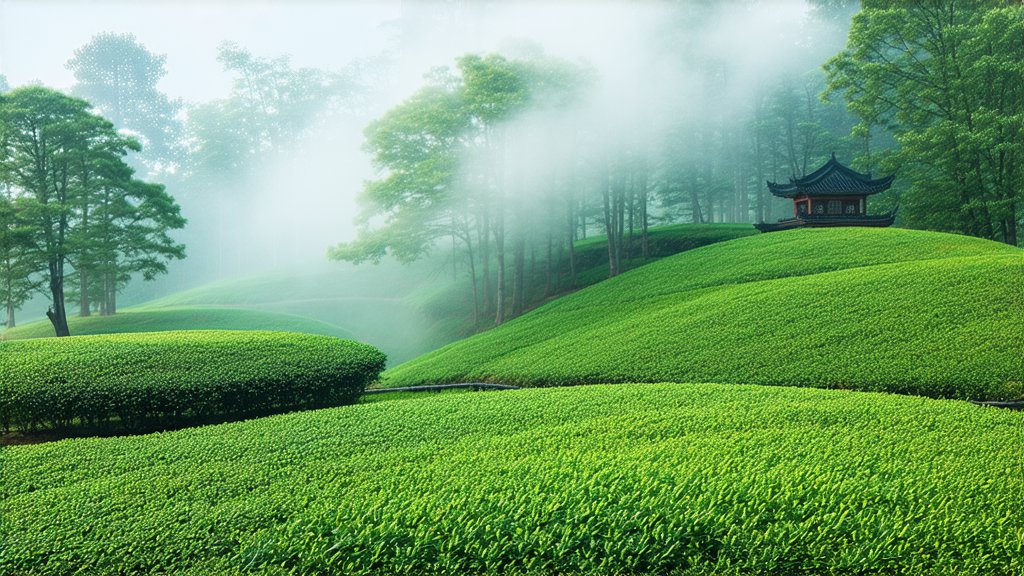
In the vast and diverse landscape of Chinese tea culture, few varieties capture the imagination quite like Junshan Yinzhen, a distinguished member of the yellow tea family. This exquisite tea, originating from the lush hills of Junshan Island in Hunan Province, is celebrated for its unique processing methods, delicate flavor profile, and rich historical significance. As we embark on this journey through the world of Junshan Yinzhen, we will delve into its storied past, explore the nuances of its various types, unravel the intricate artistry behind its creation, and guide you through the art of appreciating its subtle complexities.
A Glimpse into History
Junshan Yinzhen's roots trace back over a millennium, with its earliest records appearing during the Tang Dynasty (618-907 AD). However, it wasn't until the Qing Dynasty (1644-1912) that this tea gained widespread recognition and became a prized commodity among the imperial court. Legend has it that the tea was discovered by a local farmer who stumbled upon wild tea plants growing under a rocky cliff. Intrigued by their unique appearance and aroma, he began cultivating them, inadvertently creating what would become one of China's most revered teas.
Varieties of Junshan Yinzhen
Junshan Yinzhen encompasses several distinct grades, each with its own characteristics and appeal:
- Tribute Tea (Gongjiang): The highest quality, handpicked from young buds before they fully open, resulting in a light, sweet flavor with a hint of orchid aroma.
- Flagship Tea (Zhucha): Harvested from slightly more mature leaves, offering a balance between the delicate notes of Tribute Tea and a fuller body.
- Special Grade (Xiancha): Made from older leaves, providing a robust taste with earthy undertones, suitable for those who prefer a stronger brew.
- Common Grade (Pucha): The most affordable option, often used for daily consumption or blending with other teas to enhance their flavor.
The Art of Crafting Junshan Yinzhen
The production of Junshan Yinzhen is a meticulous process that combines traditional techniques with a deep understanding of nature's rhythms. Here's an overview of the key steps involved:
- Withering: Freshly picked leaves are spread out thinly on bamboo mats to undergo natural withering under the sun or in a shaded area. This step reduces moisture content and softens the leaves, preparing them for the next stage.
- Fixation: Unlike green teas, which are quickly fried or steamed to halt oxidation, Junshan Yinzhen undergoes a gentle fixation process known as "闷黄" (mènhuáng), meaning "to seal in yellow." This involves lightly steaming or baking the leaves at low temperatures, allowing minimal oxidation while preserving their natural color and flavor compounds.
- Rolling: The fixed leaves are then gently rolled by hand or using specialized machines to form tight spiral shapes, enhancing extraction during brewing and contributing to the tea's visual appeal.
- Drying: Finally, the rolled leaves are slowly dried in a controlled environment to achieve the desired level of moisture, ensuring optimal storage and preservation of the tea's delicate qualities.
Savoring Junshan Yinzhen: A Sensory Experience
To truly appreciate Junshan Yinzhen, one must engage all senses in a ritualistic manner reminiscent of ancient tea ceremonies. Here's a guide to savoring this exceptional tea:
- Preparation: Use a transparent glass or porcelain cup to observe the tea's dance and color changes. Boil water to around 80°C (175°F) to avoid scalding the delicate leaves.
- Infusion: Place approximately 3 grams of tea per 150ml of water. Steep for 1-2 minutes for the first infusion, gradually increasing steeping times for subsequent infusions to extract different layers of flavor.
- Appearance: Observe the bright yellow liquor, noting its clarity and the subtle play of light within. Admire the elegant unfurling of tea leaves, revealing their intricate structures.
- Aroma: Inhale deeply to detect the tea's fragrance—a harmonious blend of floral, fruity, and mineral notes that evoke the misty mountains of its origin.
- Flavor: Sip slowly, allowing the tea to coat your palate. Notice the initial sweetness followed by a lingering umami finish, with a whisper of astringency that refreshes the throat.
- Texture: Feel the smooth, velvety texture that slides effortlessly across your tongue, leaving a cleansing aftertaste that invites contemplation.
In conclusion, Junshan Yinzhen stands as a testament to the profound wisdom embedded within Chinese tea culture. Its history intertwines with legend, its varieties cater to diverse preferences, and its craftsmanship embodies the harmony between man and nature. As you embark on your exploration of this hidden gem, remember that each cup tells a story—one that spans centuries, yet remains timeless in its allure.
Whether you're a seasoned tea connoisseur or a curious newcomer, embracing the world of Junshan Yinzhen offers an opportunity to connect with a piece of China's soul. So brew yourself a pot, immerse yourself in the tranquility it brings, and let the whispers of ancient tea forests transport you to a realm where time slows down and every moment becomes a cherished memory.